
Table of contents:
- Author Bailey Albertson [email protected].
- Public 2023-12-17 12:53.
- Last modified 2025-01-23 12:41.
Siberian cat: a visiting card of Russia

Siberian cats can become the hallmark of Russia along with ballet, red and black caviar, matryoshka dolls. This is a beautiful and powerful animal, having an even complacent disposition, but at the same time bravely defending its territory, touchingly taking care of its offspring - in general, the personification of a real Russian character.
Content
-
1 History of the breed
1.1 Table: the main stages of the development of the breed
-
2 Description of appearance and standards
2.1 Table: standard of the Siberian breed SFF (adopted in 1990)
-
3 The nature of the Siberian cat
3.1 Video: features of the Siberian breed
-
4 Siberian pet health
- 4.1 Hereditary pathologies
- 4.2 Other diseases
- 5 How to choose a kitten
- 6 How to care for a Siberian cat
- 7 Feeding
- 8 Breeding work
- 9 Owner reviews
History of the breed
The Siberian cat is a phenomenal breed. On the one hand, it has been known for a very long time, and not only in Russia, but also abroad. Cats in Russian folk tales are probably of the Siberian breed. In the classical literature, there are also descriptions of cats with an indication of their Siberian origin.
These cats took part in exhibitions in England and New York during the 19th century and are mentioned or depicted in books on cat breeds published in 1889, 1898 and 1900. But the breed standards were officially recognized only in 1990.
When Russian felinologists (and the first were breeders from Moscow and Leningrad) in 1986 began work on the breeding of the national cat breed, they wanted to call it "Moscow Semi-Longhair". But since they took as a basis the type that the people associated with Siberian origin, so the Siberian cat was named.
Table: the main stages of the development of the breed
| 1986 year | The beginning of the work of the Leningrad and Moscow clubs. The surviving journals contain units of cats of the "Siberian type". |
| 1987 year | The first cat show in the USSR in Bitsa, Moscow. All fluffy cats are recorded as Siberians. At the exhibition, excellent specimens of phenotypic Siberians were selected for the development of standards. |
| 1987-1988 years | The first preliminary standards for Siberian cats appeared |
| 1988 year | Six newcomers with unknown origins of the same agouti color are assessed as Siberian phenotypic |
| 1990 year |
|
| 1992 year | The World Felinological Organization (WCF) has recognized the Siberian cat breed and registered its standard |
| 1994 year |
|
| 1996 year |
|
| 1997 year | At the coordination meeting of felinological associations and clubs of the CIS, the standard for Siberian cats was supplemented and approved in order to finally have a clear idea of the difference between the Siberian cat from the Maine Coon and the Norwegian forest |
| 1997 year | The Siberian breed is recognized by the European International Association (FIFe) |
| year 2000 | 33 Siberians become world champions, and 12 foreign countries open Siberian cattery |
Currently, unfortunately, Siberian cats are more popular abroad. The reluctance to acquire pedigree animals in their homeland is mainly explained as follows: "Why spend money if I pick up the same in the gateway."
As I see it, the breeders themselves are largely to blame for this situation. The overwhelming majority of people who have a Siberian type cat want him to be not just a pet, but also to do the natural cat's job, that is, to catch mice and rats. A Siberian is a good born hunter, who is also adapted to life in a harsh climate. But instead of promoting the working qualities of the breed, some breeders immediately stipulate that they will not give their kittens to a private house with free range. That is, they are trying to create another "sofa cushion" from a good working animal. It's like dogs - there was a brave doggie, a brave rat fighter, and became a symbol of glamor (I'm talking about a Yorkshire terrier).
Description of appearance and standards
Siberian cats are rather large animals. Females of this breed weigh up to six kilograms, and males up to twelve. But they are very mobile and have good jumping ability due to the fact that their hind legs are slightly longer than the front ones.

Siberian cats are quite large and powerful animals
The Siberian fur coat is beautiful and practical. A distinctive feature is a frill and pants. Their wool is of medium length, there is a dense undercoat, which helps the animal to feel quite comfortable even in severe frosts. The body is muscular and strong, making the Siberian cat an excellent hunter.
Siberians belong to the "forest type" together with the Norwegian forest cat and Maine Coon. And if at first glance these animals are similar, then upon closer examination, each will have its own characteristics. For example, the Maine Coon's head has angular lines, it seems to be composed of several boxes, in the Norwegian the transition from forehead to muzzle is practically not pronounced, a kind of straight line, and in the Siberian the profile is smoother than the Maine Coon, but the transition from the forehead to the muzzle is more pronounced than that of the Norwegian forest.

Forest-type cats have significant differences in head structure
A common feature of "forest type" cats can be the so-called wild color (various agouti, including white, brindle, spotted and marbled). But lately, breeders have taken a great interest in breeding Siberian cats of various colors (since they are more in demand among exotic lovers), so after looking at the proposals of different breeders, I got the impression that soon the usual "mustache-striped" will be considered exotic.
Table: standard of the Siberian breed SFF (adopted in 1990)
| general characteristics | Strong, massive, muscular animals of large and medium size. Cats are much smaller than cats. |
| Head | In the shape of a short wide trapezoid in good proportion to the body. The top of the head is flat. Smooth transition from a low forehead to a wide, straight bridge of the nose. The nose is of medium length, without stop and snub. Low cheekbones, full cheeks. Strong jaws. The chin is wide, strong enough, but not protruding. |
| Neck | Strong, short |
| Ears | Of medium size, broad at the base, set more than one ear width apart at the base. The outer ear line is vertical, the outer edge of the ear is located just above eye level. The ears are slightly tilted forward. The tips are rounded. Brushes and brushes are desirable. |
| Eyes | Large to medium size, rounded, set wide and slightly oblique |
| Eye color | Green or yellow of all shades, evenly colored. Blue eyes in color-points (Neva Masquerade) and white colors. Disagreement in van and white colors. |
| A type | Strong, massive |
| Body | Dense, massive, with prominent muscles, of medium length on strong short limbs. Paws are large and round. Tufts of wool between the toes. |
| Tail | Broad and strong at the base, almost up to the shoulder blades. Well pubescent, dull ending. |
| Wool | The top coat is hard, shiny, water-repellent, extending from the shoulder blades to the rump, down to the sides and top of the tail. On the flanks the coat is softer, loosely fitting, very dense. The undercoat is double, depending on the season: slight, short, close-fitting in summer, abundant in winter, long, very dense and dense, with excellent texture. The decorating coat is long but dense, in the form of a mane, full collar and frill. Lush "pants" and a perfectly pubescent tail. Short paws. With seasonal molting, almost nothing remains from the decorating wool. |
| Colors | All are allowed except lilac, chocolate, abi, all agouti and tabby are preferred, which have a more characteristic coat texture. Color-point and color-point with white cats are called Neva Masquerade (Siberian color-point). |
| Condition | A healthy, strong, sturdy, well-groomed cat |
| disadvantages |
|
| Crossbreeding | Crossbreeding with other breeds is not allowed |
The nature of the Siberian cat
At the first glance at a Siberian cat, one might get the impression that it is a severe animal with a wild character. But this is not the case. They are kind, friendly and can be excellent companions, at the same time they are very delicate - they are always there, but not intrusive, and if you have the time and desire, they will be happy to play with you. The representative of the Siberian breed is wary of strangers, but only until he gets used to a new person for himself.
Siberians are distinguished by their loyalty to both people and each other. So, cats and cats of this breed can create stable alliances that last until the death of one of the partners. At the same time, Siberian cats help cats to take care of their offspring.
Cats of the Siberian breed love to move "on top", therefore, for an animal living in an apartment, you should provide for such an opportunity, that is, equip a kind of obstacle course and couches located as high as possible so that your pet can observe order on its territory. The muscular body of the Siberian is very flexible, so he rarely drops and breaks any objects.
Siberian cats get along very well with all family members, including dogs, but it is better to keep poultry and rodents out of reach. Of course, the cat understands that it is these individuals that cannot be hunted, but it cannot always cope with instincts. So don't be reckless and try to avoid tragedy.
Siberian cats get along well with children, but still try to make sure that a too small child does not bother the animal and does not hurt him.
Video: features of the Siberian breed
Siberian pet health
Siberian cats are long-livers. Their average life expectancy is 17 years, although this figure often reaches 20 years or more.
Hereditary pathologies
Despite the good health of these animals, the risk of developing genetic diseases cannot be completely ruled out. Siberians have at least one dangerous hereditary problem - the likelihood of hypertrophic cardiomyopathy.
Hypertrophic cardiomyopathy (HCM) is the most common form of heart disease in cats. It causes thickening (hypertrophy) of the heart muscle. An echocardiogram can confirm whether a cat has this condition.

Hypertrophic cardiomyopathy is a thickening of the walls of the heart ventricles, due to which the organ cannot function properly
Siberians, which are intended for breeding, should be tested at the HCMP. If the diagnosis is confirmed, animals should be excluded from breeding programs. Do not buy a kitten whose parents have not been tested for this disease.
Hip dysplasia is another inherited disorder that is widespread in large cats. This pathology can be combined with a dislocation of the knee joint. The disease can take different forms:
- mild - subluxation with a slight displacement of the joint;
- severe - degeneration of the joint.
In general, with dysplasia, there is a loss of correspondence between the articular surfaces, which leads to the occurrence of dislocation or arthrosis. At the same time, cats experience pain, begin to limp, try to move less, and when they walk, they begin to "wiggle backwards." Gradually, the femoral muscle group atrophies.

Dysplasia of the hip joint - a severe hereditary pathology in cats
This disease is easier to prevent than to cure. Therefore, large cats should receive a special vitamin complex, it is better to consult a veterinarian about its composition.
Other diseases
More than 40% of domestic cats and cats are overweight. Unfortunately, we have long had a "national" stereotype of beauty in relation to pets - the thicker the cat, the better. Meanwhile, excess weight can cause or accelerate the development of many diseases in cats:
- type 2 diabetes and other endocrine disorders;
- urolithiasis;
- liver disease;
- diseases of the skin and pancreas (pancreatitis);
- joint diseases.
Siberians, like other long- and semi-long-haired cats, may experience intestinal blockage, the cause of which is wool that has entered the digestive tract. Therefore, help your cat to take care of the fur coat. Once every two months, you can give your pet a special paste to cleanse the intestines from hair. But the best option is fresh herb. If a cat has the opportunity to "graze" while walking, then she herself will find the plants she needs. And if the pet lives in an apartment, then you can grow weed on the windowsill.

Cat grass can be grown on a windowsill to cleanse the digestive tract of hair
It should still be noted that, in general, Siberian cats are quite strong and healthy animals.
How to choose a kitten
If you want to get yourself a purebred Siberian kitten, contact reliable breeders. This is the only way you can be sure that you will receive a healthy animal that meets breed standards. The cost of kittens is individual, but, as a rule, it starts from four thousand rubles.
As a rule, breeders raise kittens up to four months old and sell them already vaccinated, and some even neutered. But these are already teenagers with all the physical charms of this age - angular and disproportionate. Therefore, it is better to see photos, and even videos of your kitten at an earlier age. Conscientious breeders will be happy to provide you with such materials.
Siberian kittens grow and develop very slowly, they are fully formed only by the age of three to five years. Therefore, it is difficult to determine by the appearance of the baby how he will look in adulthood. Feel free to ask for all possible photographs of his other relatives. In principle, you can do this yourself, because most breeders have their own sites on which this information is presented.
A good kitten of the Siberian breed should have powerful legs, a wide chest, and strong bones. The eyes should not be too round, but slightly elongated. It is desirable, but not necessary, the presence of brushes on the ears, it is quite possible that they will appear later. It is good if the kitten's nose is wide and does not taper from the bridge of the nose to the lobe. A wide chin is also preferred, and its line should be flush with the nose line. A harmonious and smooth transition from forehead to nose should not be abrupt, but still well defined.

A good kitten of the Siberian breed should have powerful paws, wide chest, strong bones
The temperament of the purchased kitten is also important, which must match yours. Also keep in mind that not only do you choose the pet, but he is you. Observe how he reacts to you, how quickly he gets used to it, hold him in your arms, play. And only then make your final choice.
How to care for a Siberian cat
Although the Siberian cat has a long coat with a thick undercoat, it does not require special care, and animals, famous for their cleanliness, cope with caring for it themselves. The structure of the coat is such that it does not roll into tangles. And you just have to comb the cat once a week. During the period of active molting, this should be done more often - two to three times a week.

A simple set of tools is enough to care for a Siberian cat.
You may need to keep the cat under the tail clean, as lumps of stool or litter particles may remain on the fluffy pants.
Siberians are not afraid of water, some of them play with it with pleasure or even love water procedures. But this does not mean that they need to be washed often, especially with the use of detergents. Do this only in case of severe pollution, and even then, if possible, with plain clean water.
Cats need to wipe their eyes, examine their ears and clean them if necessary.
The author is an ardent opponent of claw trimming in cats, so he will never recommend this procedure. The cat does not need it at all, and if you are afraid that the animal will scratch the furniture or you, teach him not to do this. Cats are very intelligent creatures. People generally understand animals very slowly and hard: the animals of people are much faster and thinner. A scratching post will be an excellent way out of this situation.
If you purchased a kitten from a reliable breeder, then he is sure to be accustomed to the litter box. Moreover, some breeders are trying to introduce babies to different fillers for the toilet. In any case, ask what kind of filler the kitten is used to. If something does not suit you, retrain your pet gradually so that he does not refuse to go to the litter box.
Siberians are large cats, so you need to select the appropriate tray for them, preferably with high sides.
Feeding
Siberians do not have any special breed characteristics in relation to food. Therefore, it is important to consider the basic recommendations:
- feed the animal with quality food;
- do not overeat;
- do not offer products that could harm your cat.
The cat's diet should be varied and balanced. The cat belongs to carnivores, and the most correct food for it is the natural prey caught in the hunt - the mouse. The mouse is made up of high quality, perfectly balanced ingredients: protein, fat and carbohydrates. It contains many minerals, the liver is rich in vitamins, and the bones are rich in calcium. Unfortunately, few of us are able to provide our cat with such nutrition. But it is quite possible to compensate for it with other products.

The most correct food for a cat is a natural prey caught in a hunt - a mouse
All cats are prohibited from giving the following foods:
- bones of birds and rib bones of cattle (they can cause perforation of the intestines);
- fatty foods;
- raw river fish;
- any sweets, culinary products, pastries;
- any pickled, salted, canned food, including herring;
- fried foods (meat, fish);
- potatoes in any form, peas, beans;
- sausages and smoked meats;
- stale food.
There are many ready-made feeds on the market now. Of course, feeding them to animals is easier, but not always better. Preference for ready-made feeds is given, as a rule, because there is no opportunity or desire to tinker with natural products.

The cat should eat with appetite and not leave food in the bowl.
Siberians, as already mentioned, with insufficient activity may be prone to obesity. Therefore, you should adhere to the following rules:
- Feed the animal twice a day.
- Remember that only a healthy animal with normal nutritional interest can eat exactly as much as it needs with unlimited access to food. Therefore, it is better to restrict this access.
- If the cat does not finish its portion, then it is already full. In this case, reduce the serving size.
- The cat should eat with appetite. If this does not happen with the usual food, there are two options - the cat is overeating or getting sick. Watch her, if no one feeds her, then show the animal to the veterinarian.
- New food is introduced into the diet gradually, as cats are very conservative and may not immediately appreciate it. This is especially true of the transition from ready-made feed to natural.
Tribal work
Thanks to the data laid down by nature, Siberian cats do not experience problems in reproduction. So, cats are ready for reproduction from the age of five months, and cats at seven to eight months. They retain this function until old age.
Cats usually do an excellent job of pregnancy and childbirth themselves. They may need help only if they have problems with labor, but this is rare.
A litter of Siberian cats usually contains five or six kittens. But sometimes, if the kittens are very large, there may be two or even one baby. By the way, it is in this case that you may most often need the help of a veterinarian during childbirth. Sometimes there are also very large litters - up to nine kittens.
Siberian cats are very caring mothers. They practically do not need help in the first month of kittens' life, then, of course, they will need to introduce complementary foods and transfer the babies to an independent diet (if you are going to be a responsible breeder and raise them up to four months).

Siberian cats are very caring mothers
If you want to have kittens from your purebred pets, you need to know and follow certain rules:
- Crossbreeding of Siberian cats and cats with other breeds is prohibited.
- If you are the owner of a pet-class animal, you must ensure that it is sterilized. Such individuals are not allowed for breeding.
- The animal should be fully formed, therefore, it is better to start breeding it not earlier than one year of age.
- To get good offspring and keep your cat healthy, you should not breed animals older than five to six years.
- For a cat, one pregnancy is possible a year (if, of course, you take care of her health).
Animals that are not suitable for breeding or have reached a certain age must be neutered. Since Siberians are prone to heart problems (like all large cats), it is necessary to pay increased attention to the health of castrated cats. A correct diet and sufficient physical activity will help to avoid this problem, since the main cause of heart disease is not castration itself, but obesity, which can arise on its basis.
Owner reviews
Siberians are excellent companion cats for people with a reserved character and a busy schedule. These are not pets that you can squeeze around the clock. They will take as much attention from you as they see fit. They are affectionate, loyal, sociable, but require mutual respect from the owner.
Recommended:
Kurilian Bobtail: Photo, Description Of The Breed, Character And Behavior Of The Cat, Reviews Of The Owners Of The Cat, The Choice Of A Kitten
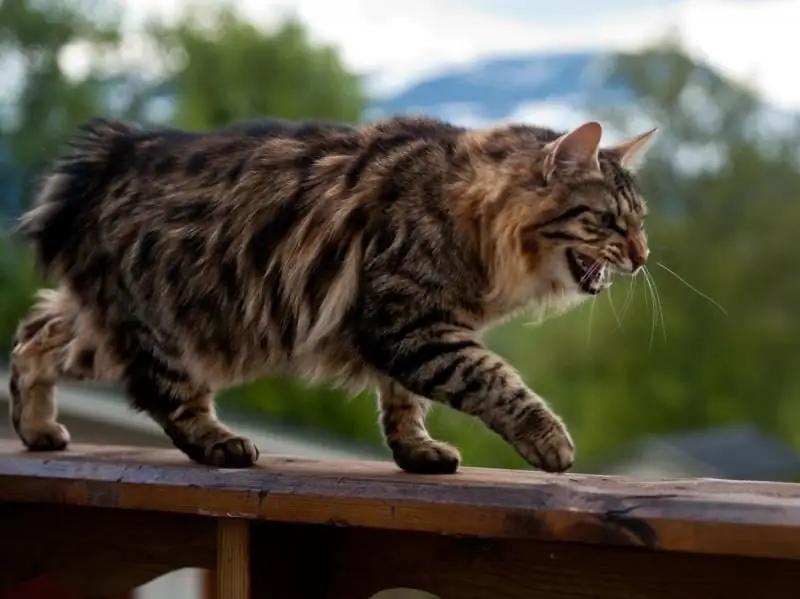
The history of the Kurilian bobtail. Description of the breed. The nature and behavior of Kuril cats. Diseases of the breed. Buying a kitten breed. Care and hygiene. Breeding. Reviews
American Curl: External Features Of The Breed, Care And Maintenance, Character Of The Cat, Choice Of A Kitten, Owner Reviews, Photos
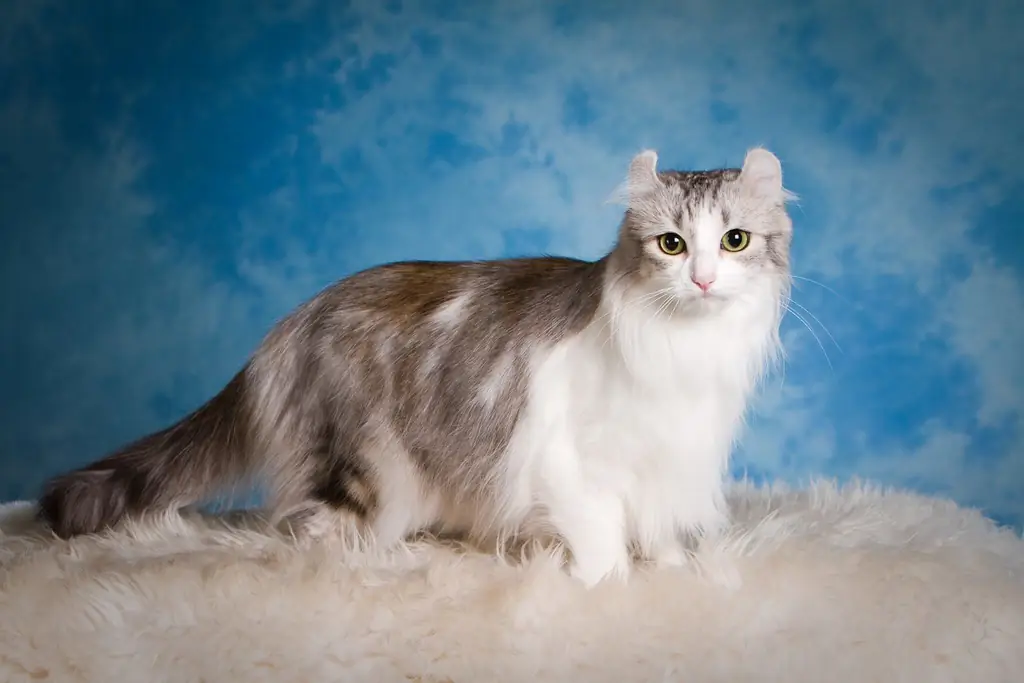
Where the American Curl breed was bred. The main external differences, character traits. Rules of care and feeding. Tribal work. Owner reviews
Chausie: Description Of The Breed, Character And Habits Of A Houseie Cat, Photo, Choice Of A Kitten, Reviews Of Cat Owners
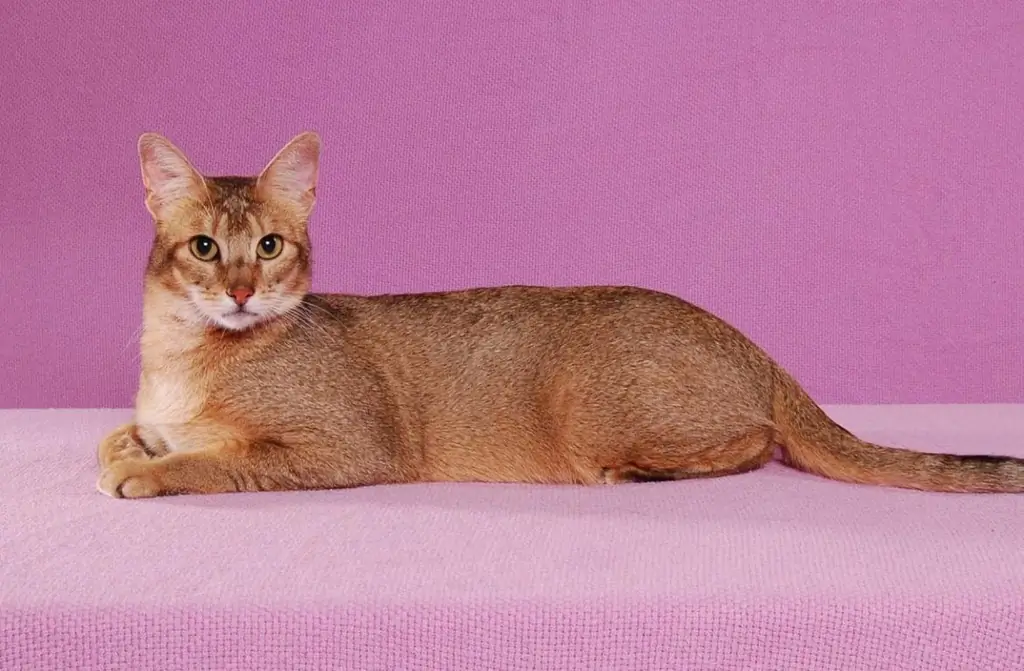
The history of the origin of Chausie. Breed standard. Character, behavior, health. Features of nutrition. Tips for choosing a Chausie kitten. How to breed. Reviews. Video
Turkish Van: Photo Of A Cat, Description Of The Breed, Character And Habits, Owner Reviews, Choice Of A Van Kitten
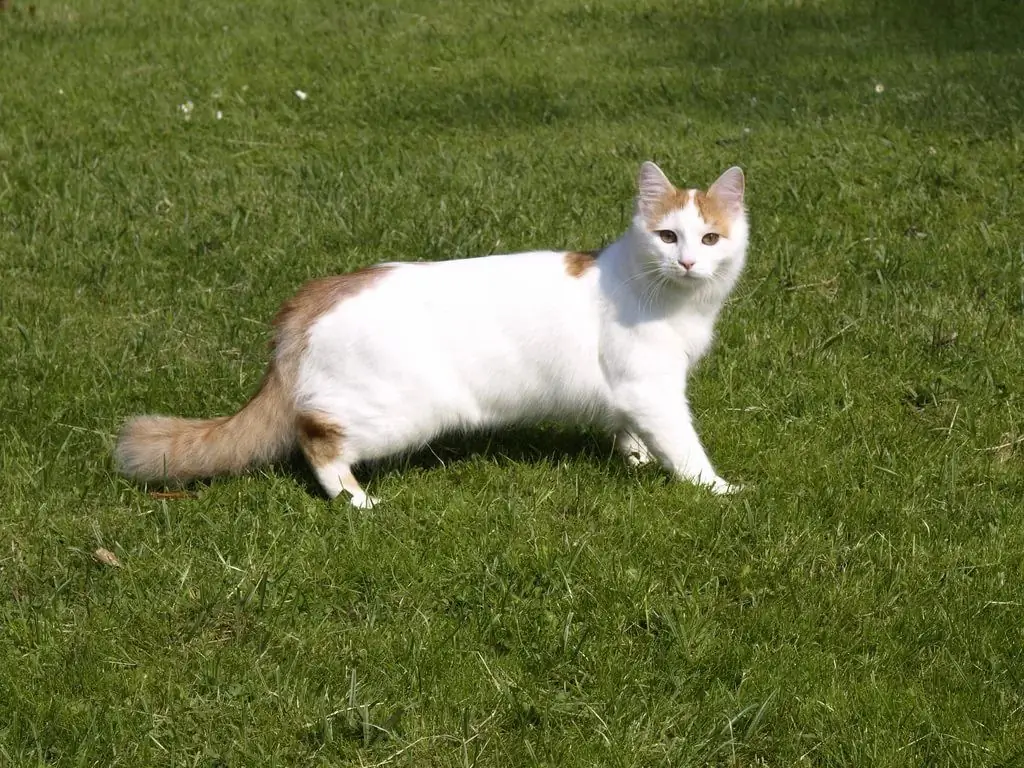
Where did the Turkish Van breed appear, what are the main external differences and character. How to properly care for the breed, how to choose a kitten. Host Reviews
British Fold Cat: Breed Features, Description Of The Character And Behavior Of The British, Photos, Choice Of A Kitten, Owner Reviews
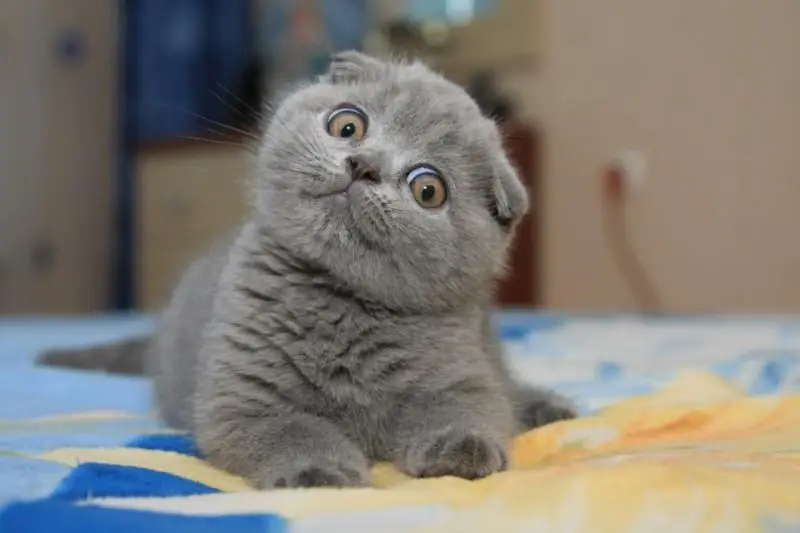
History of the British Fold. Description of appearance and character. Diseases of the breed. The choice of the Fold Briton. Maintenance and feeding of British Folds. Breeding
